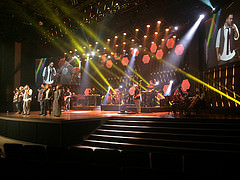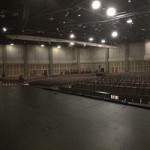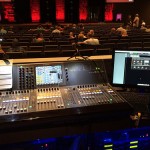
Wider Strategies: Part 3
Let’s jump back in to another strategy for making mono-ish live sound mixes sound wider.
Strategy 3: Panning
I know what you’re thinking. In the past I may have alluded to panning as not so good of a thing, but that doesn’t mean panning is bad. It’s simply another tool in our toolbox. The trick is knowing when and where you can get away with panning.
If you look at the strategies I’ve already talked about, they’ve all involved panning things in some way, and in a way today’s strategy is really just building on what I’ve already talked about. The last two strategies utilized panning when we have different versions of the same thing. Today is about what you can do when you have different things doing the same thing.
For example, the 5+ vocalists on stage all-skate is still a popular idea in many churches. Since this often involves all of those vocalists singing all the time, one of the issues that often comes with this is multiple vocalists singing the exact same part.
This may create a couple of potential issues. For starters, if the vocalists are not very tight together, the parts can smear which may decrease intelligibility. Another issue is it can be difficult to discern each singer in the mix, although, this isn’t necessarily a bad thing in a gang-vocal type scenario.
So, one solution to dealing with this is to take vocalists who are singing the same part and pan them in opposite directions. How wide you go is really up to your own taste. For me it often depends on how many singers there are. The more vocalists I have, the wider I’m probably going to pan things, and I might even use pan positions in between if there are really a lot of people.
In general this accomplishes a few things in the mix. For starters, it can make things feel wider to the folks who are covered by two speakers. Secondly, it can help open up the center of the mix for important things like lead vocals and snare drums, although in one sense this is a false perception. And finally, it can help make each voice a little more distinctive in the mix.
And this isn’t just for vocals. I’ve done it with horns. I’ve done it with strings. Basically anytime you have the same musical parts playing, you might be able to get away with panning them away from each other.
So what’s the catch?
Basically, when you pan things to one speaker, you remove it from the other which may or may not be a good thing. For example, let’s say you have two singers singing the same part, and you pan them to opposite sides. Now, what do you think will happen if one of those singers has questionable pitch? Now you’ve got part of the room hearing the correct part and the other part of the room hearing a lesser version of that part. So you have to use discretion when you’re applying this.
And here’s one last, small piece of advice before you go panning vocalists all over the place. Find out where each vocalist/musician’s spouse or significant other sits in the room, and always try and pan them in that direction.
So are you starting to catch on to the overall strategy I’ve been hitting at? A chief way we can make things feel wider is to put different versions of something in different speakers. That could mean using different versions of the same instrument or different versions of the same musical part. The point is when we have sonic differences between our two speakers, things tend to feel wider and more spacious. I’ve still got at least one more strategy for this coming to wrap this series up.


 Previous Post
Previous Post Next Post
Next Post


